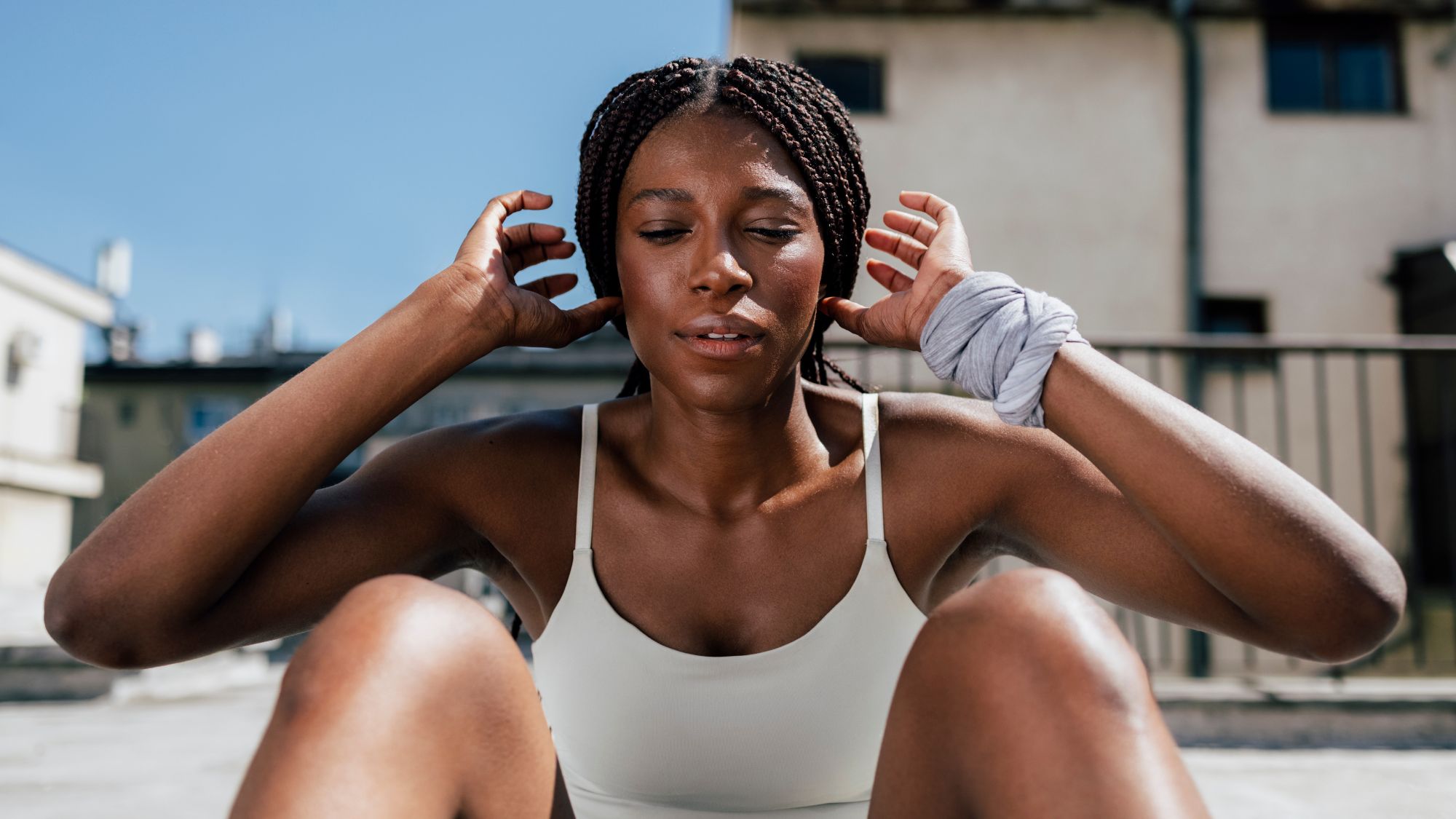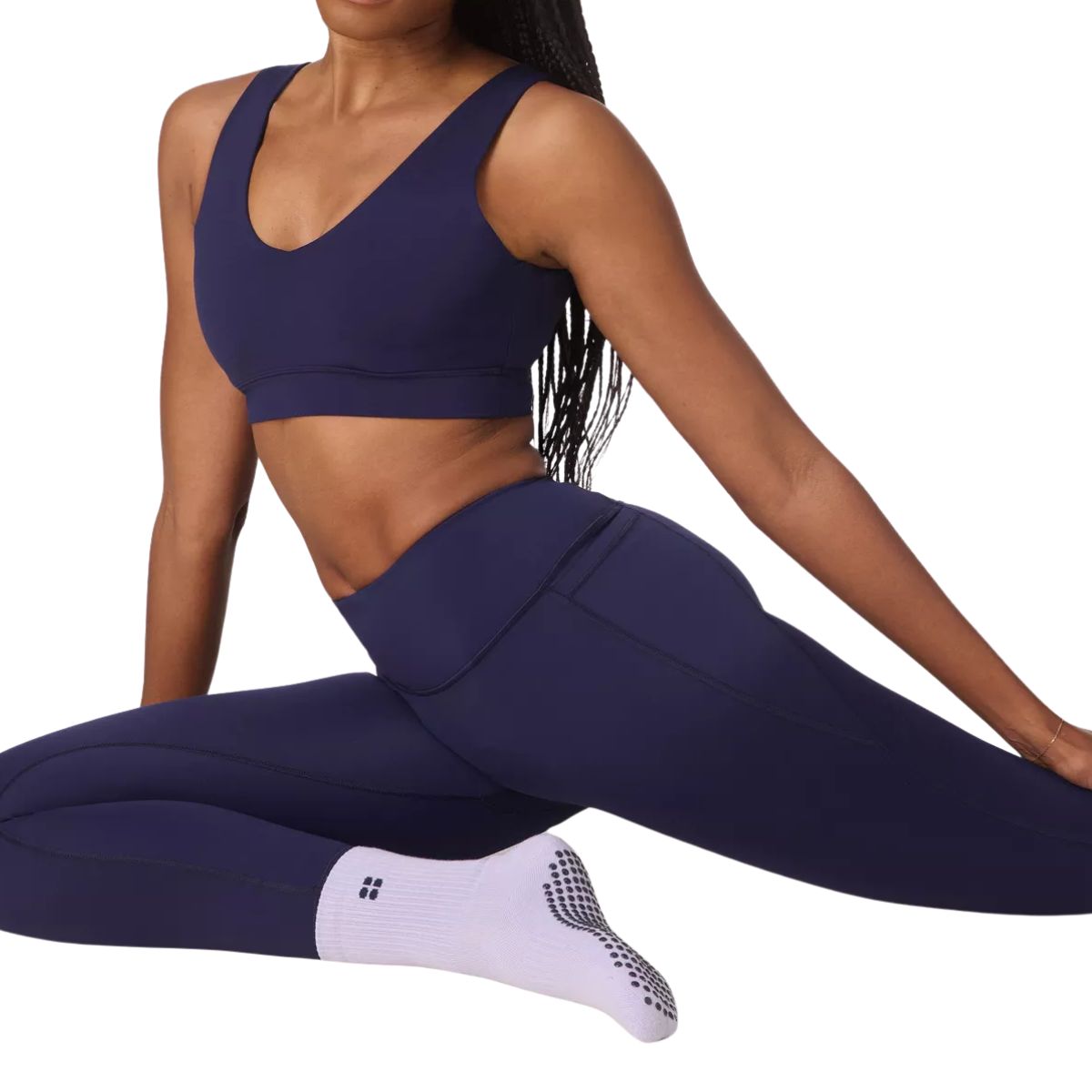Ever Wondered? This Is How Many Sit Ups To Aim for a Day for Optimal Fitness, According to a World-Renowned Coach
Spoiler: it's less than you'd think.


If you've ever wondered (mid-crunch, most likely) exactly how many sit ups you should be doing every day to optimise your fitness, then you're in the right place - this is exactly the type of question we love.
Scroll just a moment on social media, and there's a plethora of conflicting advice, not to mention challenges (100 sit ups a day, anyone?) purporting to bestow the abs of dreams. And let us be very clear, here: no amount of sit ups a day is going to help you spot train your abs. Visible, defined muscles are a complex combination of training, diet, lifestyle and genetic factors outside of our control - so this certainly isn't what we're promoting, here.
We're way more interested in the strength and fitness benefits of a regular, consistent sit up regimen, and when it comes to crunches, whether there is an ideal amount. As for why you'd bother? Well, crunches have long been viewed as an essential part of a well-rounded core workout, and research (such as this study, published in the Journal of Physiotherapy) shows that they are indeed effective when it comes to improving abdominal muscle strength.
Can't wait to find out? Keep scrolling for all you need to know. Love hearing the latest core strength trends? Check out our guides to the best core workouts at home you can do, the best deep core exercises , and the best core workouts under 10 minutes, before you go.
Keen to know how many sit ups to do every day for optimal fitness? Top coaches weigh in
What are sit ups?
Let's start with the basics. We're using the terms sit ups and crunches interchangeably, here, and while you probably don't need us to explain what a sit up is, we'll briefly get into it.
"A sit up is a classic exercise where you lie on your back and lift your entire torso off the ground, bringing your chest towards your knees," explains personal trainer Emma McCaffrey. "Meanwhile, a crunch is a variation where you only lift your head and shoulders off the ground, focusing more on the upper abdominal muscles."
And to say they're the most well-known ab exercise is something of an understatement: we'd bet money on the fact that you've all done at least one in your life.
Celebrity news, beauty, fashion advice, and fascinating features, delivered straight to your inbox!
What are the benefits of sit ups?
That said, it's easy to forget the reasons why we do the most common moves in our repertoire. Benefits-wise, a properly executed sit up can be a powerhouse move for the core.
1. They improve core strength
So obvious, it almost goes without saying, but do bear with us! "The main benefit of sit-ups and crunches is that they strengthen the core, particularly the rectus abdominis or the "six-pack" muscle," shares James Brady, personal trainer at OriGym. "A strong core is essential for almost every movement you do, whether you’re lifting weights, running, or just bending down to tie your shoes."
2. They're accessible
Fitness trends aren't without significant barriers to entry, but the humble sit up is one of the most accessible moves out there - and for that, we love it.
"Sit ups are incredibly accessible," agrees Brady. "You don’t need a gym or equipment, so they’re ideal for home workouts or adding into a quick routine when you’re short on time."
3. They build functional fitness
Having a strong and stable core (referred to in Pilates as the powerhouse) is vital not just for strength and fitness, but for everyday life, too.
"A strong core is essential not just for aesthetics, but for balance, posture, injury prevention, and overall athletic performance," says Rowan Clift, training and nutrition specialist at AI-based fitness and lifestyle coaching app Freeletics. "A well-trained core supports every movement, from lifting weights to running, to simply standing with proper posture."
4. They help improve posture
It's well established that a strong core can help with posture and back issues, and properly executed sit ups can contribute to a stronger, more stable core.
"Regularly doing sit-ups or crunches can improve posture, reduce the risk of back pain, and help with overall stability and balance," agrees Brady.
Furthermore, sit ups can also improve spinal mobility, aiding posture and relieving back pain.
Should we be doing sit ups every day?
Now, fans of an online challenge and those who love an all-or-nothing mentality may beg to differ, but we're going out on a limb here and suggesting that just because you can do something every day, doesn't mean you should.
"While sit-ups and crunches can be effective, they do come with a few potential drawbacks if done incorrectly or in excess," warns Brady. "The biggest concern is strain on the neck and lower back. If you pull on your head with your hands or arch your back off the floor, you can easily stress areas that aren’t meant to take the load. This is particularly true with high-rep sit-up routines done quickly and without control. People with existing back issues or poor posture should be particularly careful."
To build overall strength and fitness, it's accepted that we need to work across all planes of motion and engage different muscles. Relying solely on one move means you'll miss out on the cross-training benefits of a more varied routine.
"Another drawback is that sit-ups and crunches mainly target the front of the core (the rectus abdominis) and don’t do much for deeper core stabilisers, obliques, or lower back muscles," agrees Brady. "Over-relying on them can create muscle imbalances if you’re not also training those other areas."
How many sit ups should we be doing per day for maximum fitness?
So, when it comes to the million-dollar question, you may not be surprised to learn that it's - well, complicated.
"There’s no magic number when it comes to how many sit ups to do each day," cautions Clift. "It really depends on your fitness level and goals. Beginners might start with two to three sets of ten to 15 controlled repetitions, while more advanced athletes can increase reps or add resistance to the movement for greater challenge."
As with any exercise, the experts advise focusing on quality over quantity.
"Doing 50 rushed crunches with poor form won’t be as effective, or safe as doing 15 slow, controlled reps where you're actually engaging the muscles properly," notes Clift.
Rather, all our experts agree that we should focus on a mix of core exercises throughout the week to ensure effective reps and maximum results.
"For optimal fitness, it’s better to train the core like any other muscle group," advises Brady. "Allow it stimulus and challenge through effective reps, then allow it time to recover."
How to do a sit up with correct form
Keen to give sit ups a go and incorporate them into your weekly workout rotation? The video below gives an expert-led and detailed play-by-play.
According to health and fitness coach Jenny J, try the following:
- Start with your knees bent and your back flat against the workout mat.
- Try and avoid grabbing your neck or head and pulling your upper body forward. Instead, activate your core muscles to pull your body up and achieve the crunch.
- To do this, put your hands behind your head with your elbows wide. Ensure your chin is off your chest, too, then use your abs to focus on lifting your shoulder blades and back off the floor.
- Pull your body up all the way to seated, exhale on your sit up, and exhale on the way down as you return to your mat.
Shop MC UK's go-to training essentials now:
Are sit ups alone enough to build a strong core?
Well, no. "Sit-ups and crunches alone are not enough to build a truly strong and functional core," says McCaffrey. "A strong core involves much more than just the 'six-pack' muscles. It requires engaging the deep core muscles (like the transverse abdominis and pelvic floor), as well as the obliques (side muscles) and the muscles of the lower back. A comprehensive core routine should include exercises that work all these areas, such as planks, side planks, bird-dogs, and dead bugs, to ensure balanced strength and stability."

Anna Bartter is a freelance journalist who writes about health, fitness and women's lifestyle for publications including Stylist, Metro and Psychologies, among others.
She's always on a quest to find a variety of fun and functional workouts that give you the most bang for your workout buck and she's passionate about championing movement for everyone's mental and physical wellbeing.



